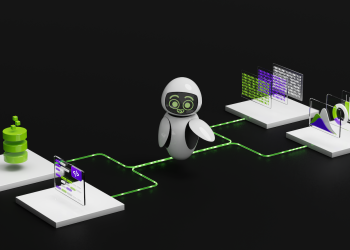Genel Amaçlı Robotlar İçin Yeni Eğitim Yöntemi Geliştirildi
Ünlü çizgi film “Jetgiller”de, robot hizmetçi Rosie evi süpürdükten sonra akşam yemeği yapmaya ve çöpleri dışarı çıkarmaya geçiş yapar. Ancak gerçek hayatta genel amaçlı bir robota eğitim vermek hala büyük bir zorluktur.
Çok Kaynaklı Verilerden Yararlanan Yeni Eğitim Tekniği
MIT araştırmacıları, çok çeşitli kaynaklardan elde edilen verileri bir araya getirerek herhangi bir robota geniş bir yelpazede görev öğretebilen çok yönlü bir teknik geliştirdi. Bu yöntem, simülasyonlar ve gerçek robotlardan gelen verileri ve görüntü sensörleri ile robotik kol pozisyon kodlayıcılarını dahil eden heterojen bir veri yığınını kesiştirmeyi içerir.
İlham Aldığı Yapay Zeka Modelleri
Çalışmalarında büyük dil modellerinden esinlenen araştırmacılar, robotik verilerin farklı şekillerde olduğunu ve pre-training yapmak için farklı bir mimariye ihtiyaç duyulduğunu belirtiyorlar. Heterojen Pretrained Transformers (HPT) adlı yeni bir mimari geliştiren ekip, çok çeşitli veri kaynaklarından gelen verileri bir araya getirerek bu yeni yaklaşımı geliştirdi.
Sonuçları ve Gelecek Çalışmaları
HPT sayesinde robot performansında %20’ye kadar artış sağlanırken, gelecekte veri çeşitliliğinin HPT performansını nasıl artırabileceğini incelemek istediklerini belirtiyorlar. Ayrıca HPT’yi GPT-4 ve diğer büyük dil modelleri gibi etiketsiz verileri işleyebilecek şekilde geliştirmek istediklerini vurguluyorlar.
Bu çalışma, Universal Robot Beyni hayalini gerçekleştirmeyi amaçlıyor ve robotik politikalarda bir atılım yapmayı umuyor.
Bu çalışma Amazon Greater Boston Tech Initiative ve Toyota Araştırma Enstitüsü tarafından kısmen finanse edilmiştir.









